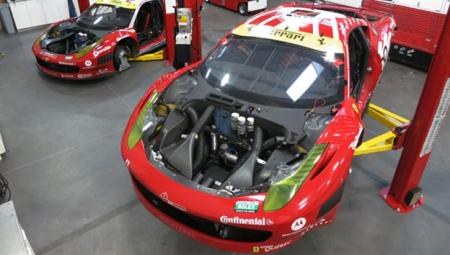A Car’s Life After The Rolex 24 At Daytona

After the Rolex 24 At Daytona, teams tear down their cars to the chassis to assess the car part by part in preparation for the next race. Days after the checkered flag waved over the Rolex 24 At Daytona, the winning No. 01 Chip Ganassi Racing with Felix Sabates BMW/Riley was largely unrecognizable except to its mechanics. That’s because the car, co-driven to victory by Scott Pruett, Memo Rojas, Juan Pablo Montoya and Charlie Kimball, was torn down literally to the chassis to be assessed part by part in preparation for next month’s GRAND-AM of The Americas presented by GAINSCO and Total.
GRAND-AM Road Racing Daytona Prototype, GT and GX teams must use the same chassis number throughout the season. Fans participating in the March 2 pre-race Grid Walk at the Circuit of the Americas will see the actual Daytona winner – as well as the DP and GT championship cars from 2012.
Ganassi, whose team is based in Indianapolis, began fielding the current Generation 3 car in January 2012. It replaced a chassis the organization had raced since 2004.
“We’ve been fortunate,” said team manager Tim Keene. “We haven’t had that many (serious) accidents and the Riley car is built very, very strong.
“They’re not bullet-proof but they’re close to it.”
The post-race process begins with Keene’s staff meeting to assess problems that cropped up during the event. The car has a crew chief, two assigned mechanics and one floating mechanic. Keene estimates the tear down, service and rebuild will require 400-500 mechanic hours to complete.
“You do a season’s worth of running in one race so there’s a little bit more attention paid to the frame,” said Keene. “We Magnaflux everything, although we do that after every event.
“Basically, you clean things to check for cracks; a part that’s about to fail. We spotted a few things but nothing show-stopping. There wasn’t a mark on the car.”
Canada’s AIM Autosport follows a similar schedule with its pair of GT Ferrari 458 Italia cars. The Rolex 24’s third-place car co-driven by Anthony Lazarro, Emil Assentato, Mark Wilkins and Nick Longhi had damage to its rear bumper and sub frame. The No. 61 sister car, new in 2013, required troubleshooting and replacement of wiring parts to fix electrical gremlins that took it out of contention.
The main areas of attention post-race are suspension, transmission and driveline, serviced and/or replaced based on intervals provided by Ferrari and experience gained racing last year’s car. New or rebuilt engines will be installed prior to Austin’s event and will remain in the cars at least until mid-season.
“We anticipate a whole season can be done with one engine unless the engine experiences mechanical parameters out of the ordinary,” said AIM spokesman Conrad Italiano.
“Sprint race preparation is really different than the 24 so we don’t disassemble the car as much between races but inspection and component replacement is based on mileage limits that are tracked by the crew chief and car engineer.”
The inaugural race in Austin can be seen on SPEED at 5:30 p.m. ET March 2.








